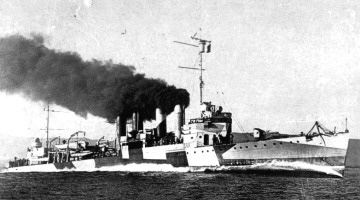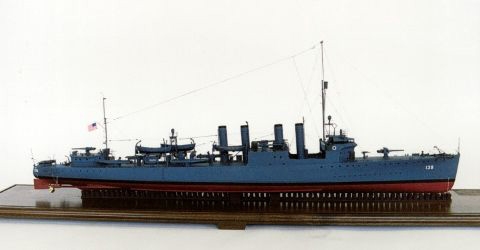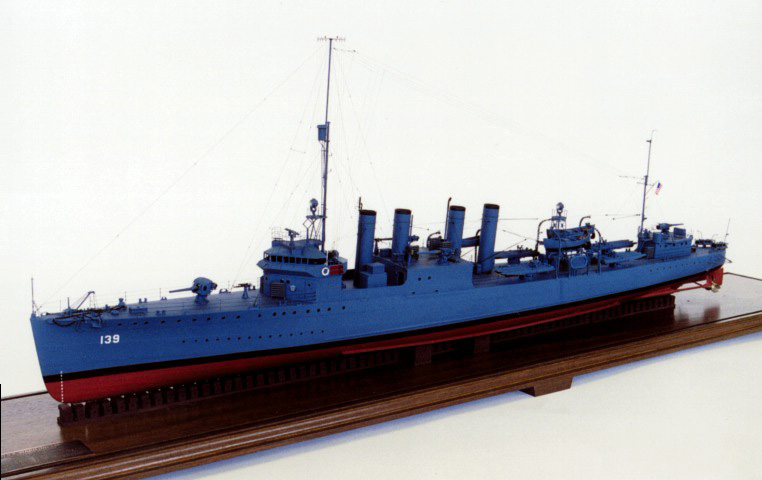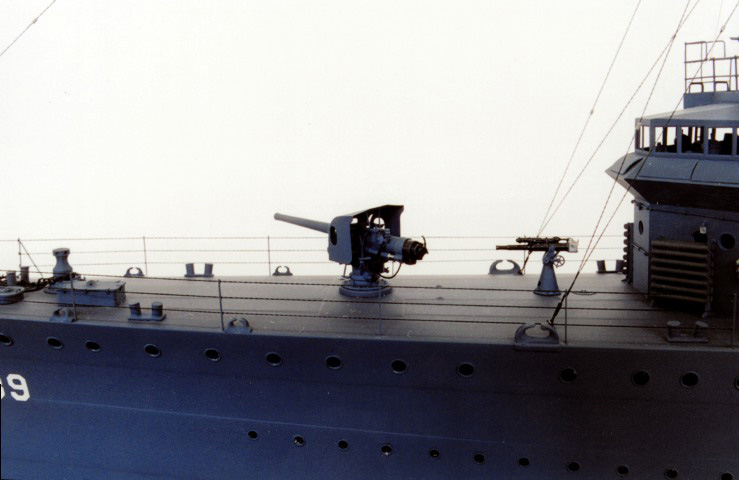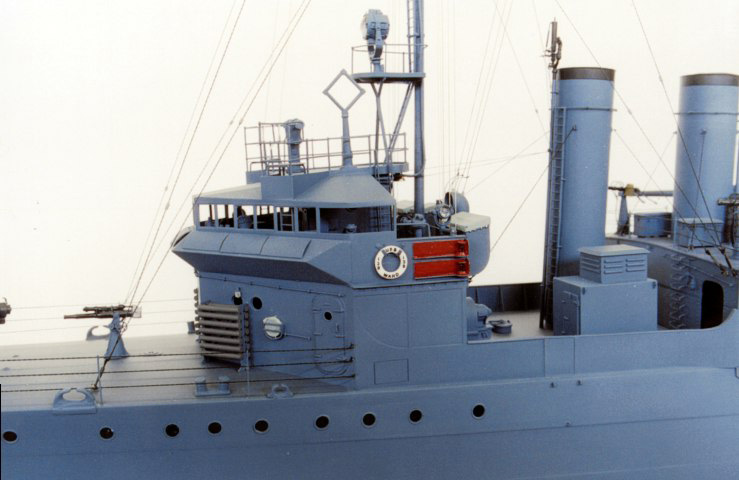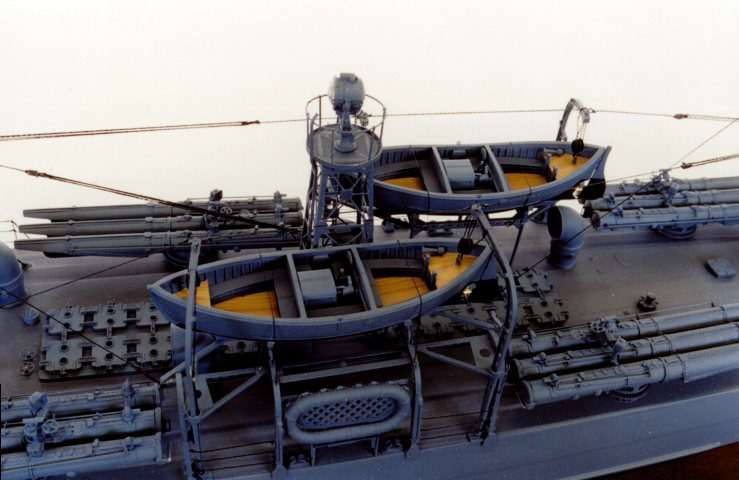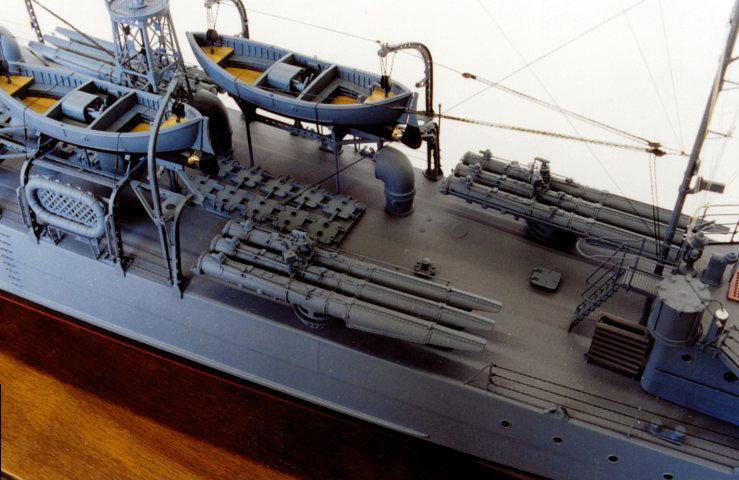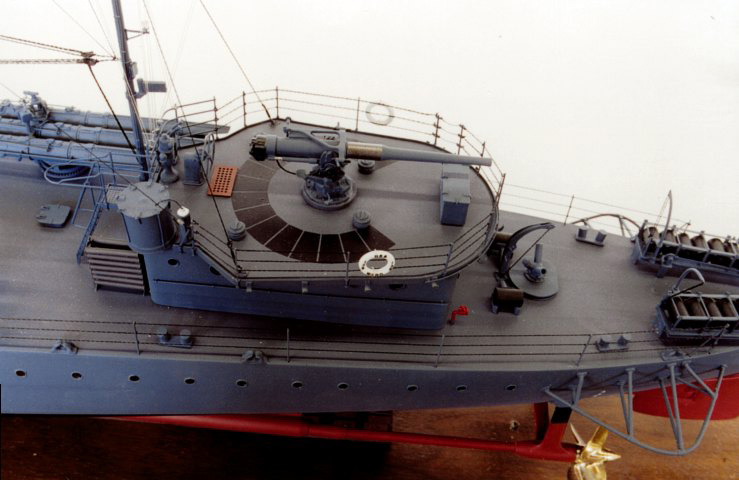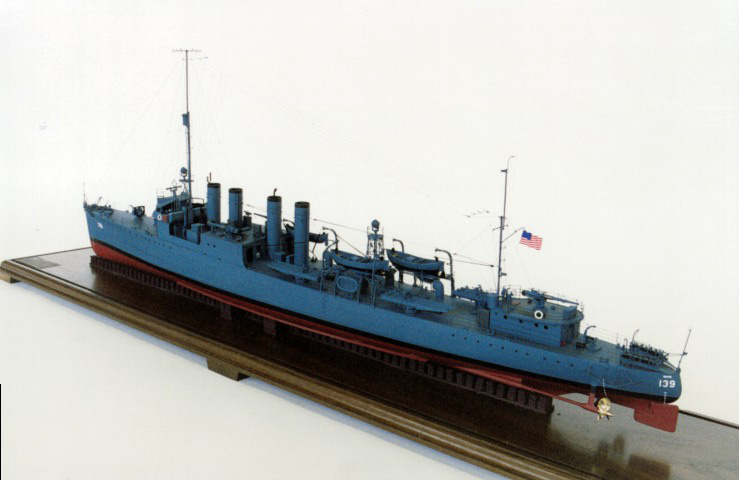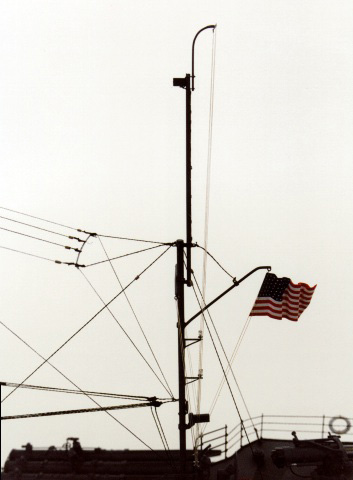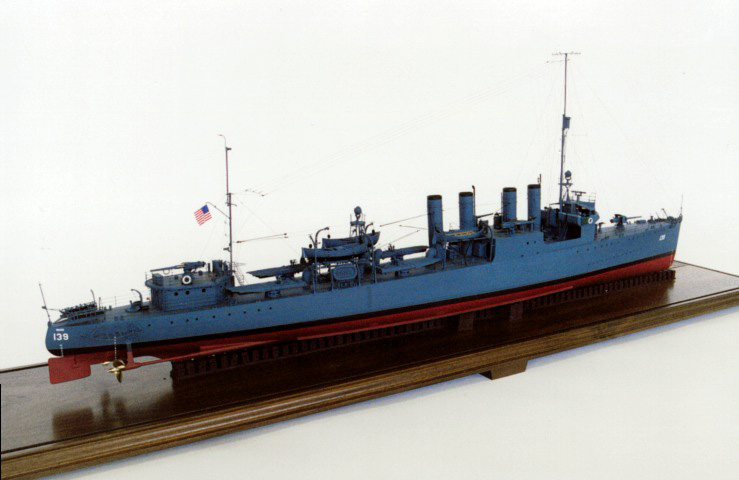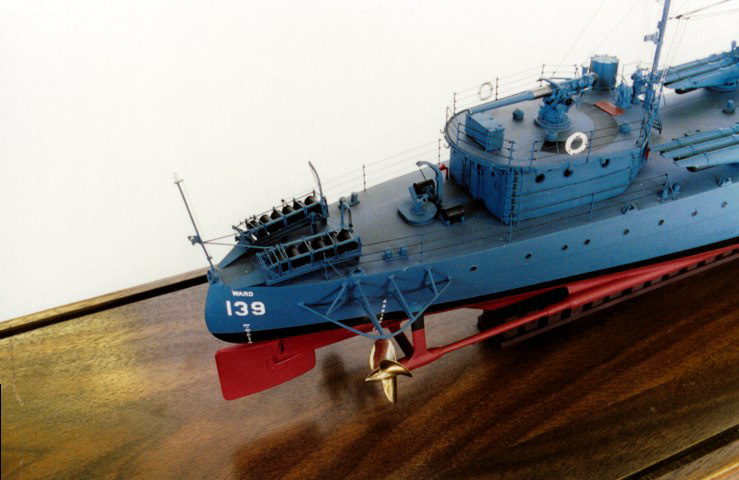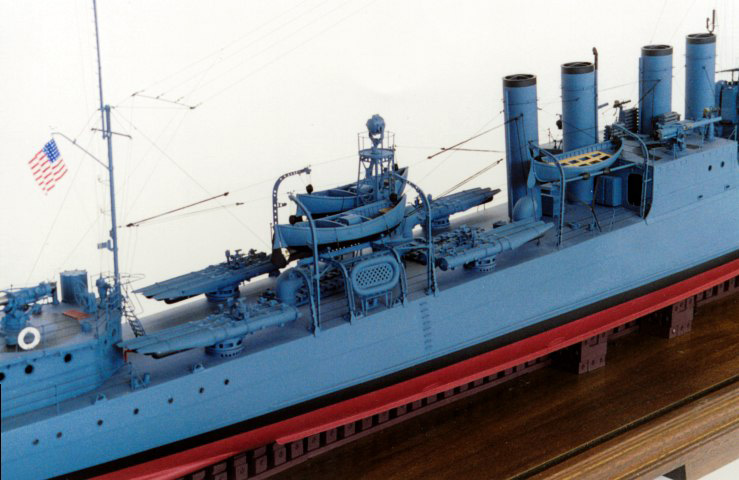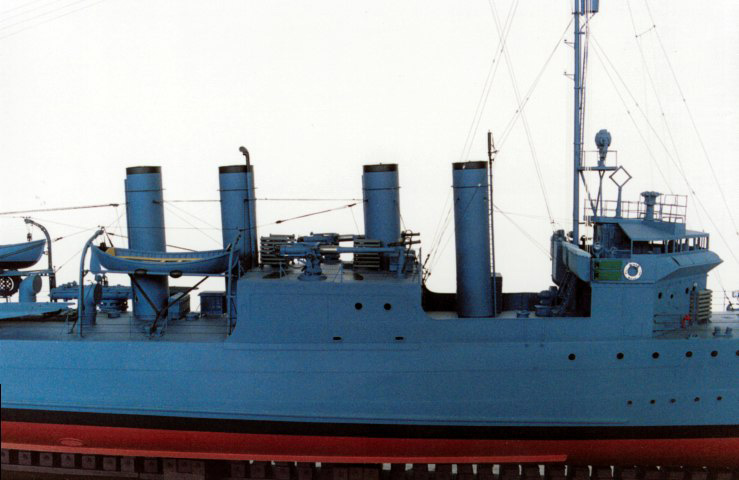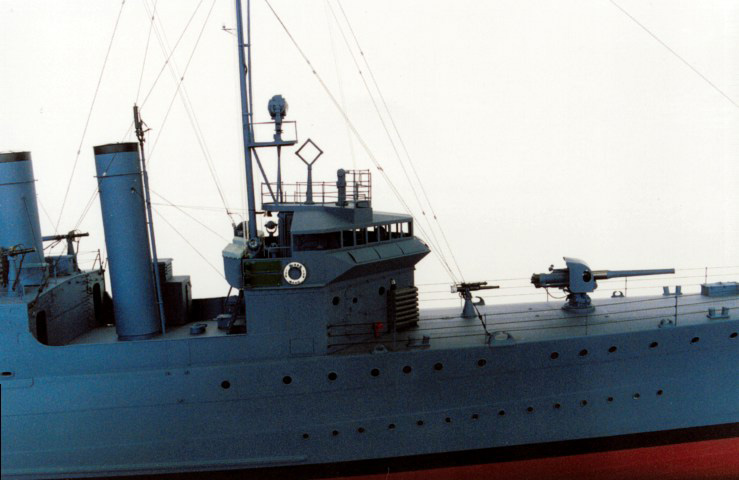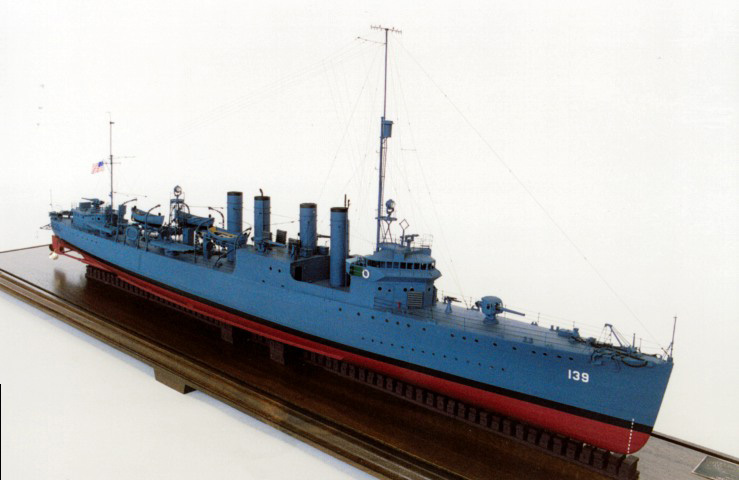Flush Deck Ward
Flush Deck Destroyer – USS Ward
- Scale: 1:96
- Release: 2001
- Limited Edition: 40
- Price: $7,500
- Model Size: 41”L x 5”W x 10”H
- Base Type: Black Walnut
- Base/Case Size: 45”L x 7”W x 18”H
- Availability: Sold Out
Flush Deck Destroyer – USS Ward
The US Navy’s standard, mass-production destroyer of late World War I had two nicknames: “Four-Stacker” or “Four-Piper” for its four (4) funnels, and “Flushdecker” reflecting its continuous sheer-line, which differed from the high-forecastle designs of preceding classes.
Between 1917 and 1922, 273 four-stackers were built in three nearly identical-looking classes: Caldwell (6 ships), Wickes (111 ships) and Clemson (156 ships). As completed, they displaced 1,215 tons on an overall length of 314 feet 4½ inches, beam of 30 feet 11 inches and mean draft of 9 feet 5 inches. With four (4) boilers driving two 9-foot screws at 27,000 shp, they could make 33 knots. Their normal crew included 105 officers and enlisted, and they were initially armed with four (4) 4-inch deck guns, one (1) 3-inch anti-aircraft gun, twelve (12) 21-inch diameter torpedo tubes and two (2) stern-mounted depth charge racks, plus 0.50 cal. machine guns and small arms. Built for World War I, there was little immediate need for these ships after the war, so many of them were laid up after only brief service, and by the thirties, they were outdated as the larger and better-armed designs of the Farragut and Porter-classes and their successors entered service.
As World War II broke out, the desperate shortage of fleet escorts in the face of the U-boat onslaught made them valuable again. Fifty (50) were transferred to the Royal and Canadian navies before the US entered the war, and were immediately put to use. Four-stackers also saw front line service with the US Navy in the Java Sea campaign in the months after Pearl Harbor, but those that were not lost were withdrawn to convoy escort, fast transport, and other duties.
Thereafter, the US and Royal navies modified them in a seemingly endless variety of configurations. Convoy escorts acquired radar and anti-submarine armament: depth charges (K guns, Y guns, roller racks) and even hedgehogs. Two (2) of their four (4) torpedo tube banks were often landed to compensate for added weight. High-speed transports (APDs) were among the most common: equipped with four (4) landing craft and accommodations for 200 marines, these shallow draft vessels were put to good use in the Pacific Island campaign. The most famous four-stacker of all, the HMS Campbeltown, was altered to resemble a German torpedo boat in order to facilitate its entry into the German held port of St. Nazaire.
By the end of the war, few of the remaining 4-stackers actually had 4 stacks. Many of them had one (1) or two (2) of their four boilers removed to increase range or provide additional accommodation, as in the case of the APDs. Bridge arrangements also changed from that of the original design, especially on the Royal Navy four-stackers.
Fine Art Models
Fine Art Models will begin its limited edition models of the four-stack destroyers with the USS Ward, DD 139. Only fifteen days elapsed between the laying down of her keel and her launch at Mare Island, California – a record. She became famous for detecting a Japanese submarine off the entrance to Pearl Harbor early on the morning of December 7, 1941. She was lost exactly three years later, following an air attack in Ormoc Bay on the west side of Leyte Island, Philippines. The Ward earned one (1) battle star as a destroyer and eight (8) more following her conversion as a fast transport.
USS Ward, a 1247-ton Wickes-class destroyer, was built at the Mare Island Navy Yard, California. Under the pressure of urgent First World War needs for destroyers, her construction was pushed rapidly from keel laying on May 15, 1918 to launching on June 1 and commissioning on July 24, 1918. The Ward was transferred to the Atlantic late in the year and helped support the trans-Atlantic flight of the NC flying boats in May of 1919. She returned to the Pacific a few months later and remained there until she was decommissioned in July, 1921. She had received the hull number DD 139 in July, 1920.
The outbreak of World War II in Europe brought the Ward back into active service. She was re-commissioned in January, 1941. Sent to Pearl Harbor shortly thereafter, the destroyer operated on local patrol duties in Hawaiian waters over the next year. On the morning of December 7, 1941, the Ward was conducting a precautionary patrol off the entrance to Pearl Harbor when she encountered a Japanese midget submarine, attacked and reportedly sank it, thus firing the first shots of the Pacific War a few hours before Japanese carrier aircraft formally opened the conflict with their attack on the US Pacific Fleet inside the harbor.
